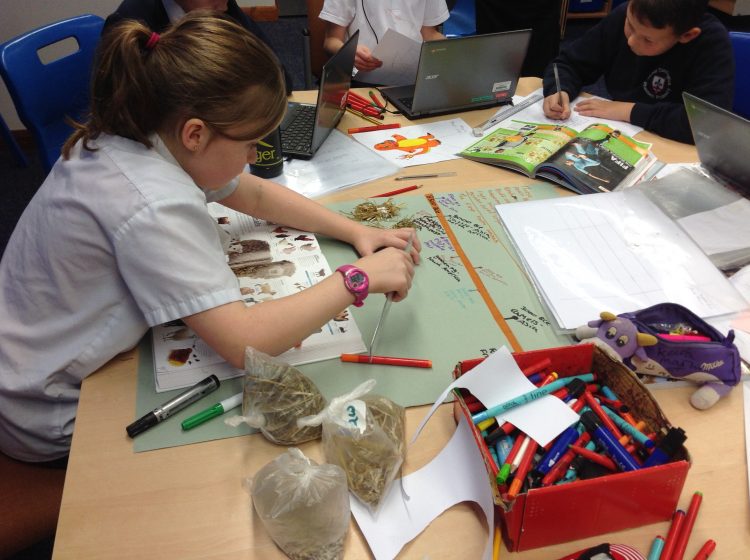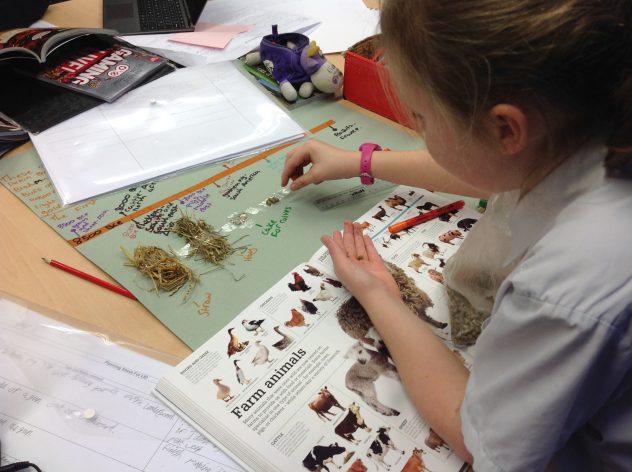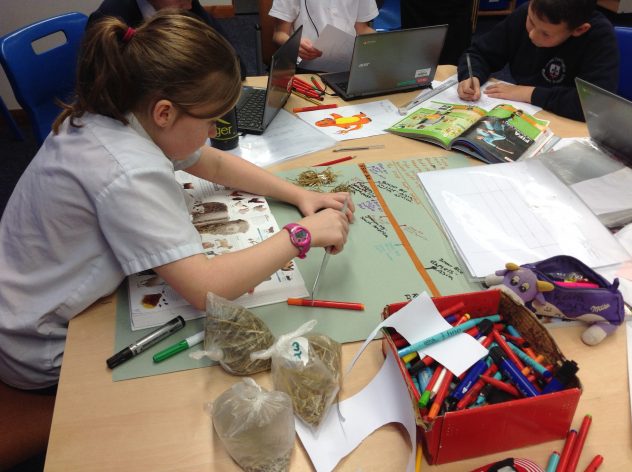By Ian Thomas (Deputy Headteacher, Great Torrington Bluecoat Primary School, North Devon, UK)
At Great Torrington Bluecoat Primary School (GTB), students follow a broad program of study designed to maximize creativity, critical and collaborative thinking, global awareness, and depth of learning. One feature of their rich and diverse educational experience is the Learning in Depth (LiD) program. (Find out more about LiD here on the program website.)
Some History
LiD started in January of 2015 at GTB with a group of twenty pupils in Year 5. It was a big success. At the end of that year we reflected on student learning—especially what we learned of student knowledge and progress through their “video diaries” and on-line portfolios. We decided to offer LiD to all pupils in Year 5 and 6 starting in the fall of 2016. Now there are more than 160 children participating in LiD at GTB.
Some Recommendations
We have learned a lot through the process of starting and expanding LiD. I want to highlight important considerations for creating a successful LiD program based on what we have learned from our experiences expanding LiD and integrating it into our school.
- Help students gain the skills. During week two and three of LiD the children took part in workshops which supported them in how to research effectively, how to ask good questions using Bloom’s taxonomy, and how to make pop up books. From week four to week twelve the children then worked independently. During this period the children were also encouraged to continue with their research at home. Let me stress here, though, that there was no expectation that LiD had to happen at home from week to week.
- Carefully schedule LiD into your school culture. Our LiD sessions were organised to take place during the classroom teacher’s planning and preparation time. This has meant that additional staff members were involved with students’ LiD time. The challenge: staff members involved have ranged in their knowledge, understanding, and experience of LiD.
- Ensure all teachers/staff/school leaders have a strong understanding of the principles of LiD. Having a solid foundation of knowledge about LiD allows all participants to support program aims and facilitate the learning of the children. (Lots of resources for learning about LiD are available here.)
- Have adequate resources and be organized. Increasing the number of LiD pupils at GTB has meant that there is more demand for books, artefacts (linked to the 100 LiD topics) and chromebooks so the children can research. At GTB books linked to the LiD topics have been purchased and boxes have been made up for their storage. These books stay in school. Our librarian has ordered topic boxes linked to the 100 topics from the local library ready for the spring term.
- Get parents involved. One of our main objectives over the past year at GTB has been to consider more ways in which we can get our parents to engage with their children’s learning. The LiD work completed so far has highlighted greater pupil engagement and enjoyment. Children have been bringing in more work completed at home and this work has not just been completed with parents but with other members/friends of the family. This has led us to consider holding day/evening events where we invite parents/friends into school to work alongside children during LiD sessions.
- Consider using on-line resources for documenting learning. At GTB we initially used “video diaries”. The concept of using video diaries worked well with our small trial group from January to July 2016. While using the I-PADs and I-movies was really easy, transferring the video diaries to CD’s for the children to take home was a problem and very time consuming. We took a different approach when we expanded our LiD program starting in September 2016.

We now use a resource called clipchamp that provides each child with the chance of completing five diaries a month. During the initial three sessions of the autumn term we worked with the children on how to access clipchamp, how to record a video diary, and how to stay safe online.
We use three forms of recording: independent child initiated recordings, teacher-led recordings, and a review recording. In the independent child initiated recordings, children are provided with regular opportunities to record their own video diaries. They are provided with key questions to support them in moving deeper in their learning and thinking. At GTB we support Building Learning Power (Click on the link to learn more about the work of Guy Claxton) and thus pose questions related to four dimensions to learning to support students’ learning capacities: a) knowledge b) literacies and expertise c) learning habits d) values and interests.
The “teacher-led recordings” are planned by the teacher and take place at the end of each half term. In this formative assessment, the teacher and the child review the child’s portfolio together, discussing strengths and areas of development. The students and teachers also set learning goals for the next LiD term.
The “review recording” is completed by the teacher at the end of the term and focuses on the outcomes of the work completed by the child. The teacher has an opportunity to not just highlight the strengths but to communicate what aspects of student learning capacity (Building Learning Power) needs to be improved along with future ideas/questions for further LiD work.
**Kiera Martin is studying Cattle in LiD. In the photo you can see that she brought in food for cows. She was given the book as a gift and was inspired for a whole hour.
Moving Forward With LiD–International Connections
Over the past two years we have been developing partnerships with two schools, one of which is in India and the other in Germany. We have visited the schools and our pupils are involved in completing curriculum-based projects and regular Skype calls. We have recently started working with these schools on developing LiD with each child having the same topic as their pen pal. This is very exciting and something we are looking forward to developing further.
So far LiD has been a great success and this is evident when observing the children’s engagement and enthusiasm for their work. Amusingly, I can’t go anywhere in the school without a child approaching me to ask me a question or show me the work they have completed at home. I also don’t appear to be able to go into a bookshop without seeing a book linked to a child’s topic and feeling I need to purchase it.



